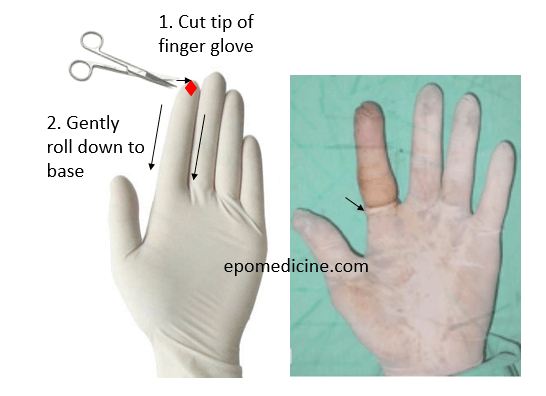Method 1:
- Digital block
- Painting with antiseptic solution
- Application of sterile latex gloves (slightly larger than the patient’s hand) on the patient’s hand
- A tiny piece of glove fingertip is snipped off to create a 1- to 2-mm hole
- With very gentle pulling—by either the forceps or the surgeon’s fingers—the hole is dilated and passed around the nail so that the hole does further break
- The glove finger is rolled down all the way to the interdigital webs (exsanguinates and arrests circulation at the same time)
Method 2:
This is a similar method as described in Method 1. Here, the finger of glove is cut and applied to the finger on which surgery is to be performed. Similarly, a small hole is cut at the tip of the finger of glove and rolled to the base of the finger as in Method 1.
Reference: Wei, L.-G., Chen, C.-F., Hwang, C.-Y., Chang, C.-W., Chiu, W.-K., Li, C.-C., & Wang, H.-J. (2016). Safe Finger Tourniquet—Ideas. Annals of Plastic Surgery, 76, S130–S132. doi:10.1097/sap.0000000000000701
